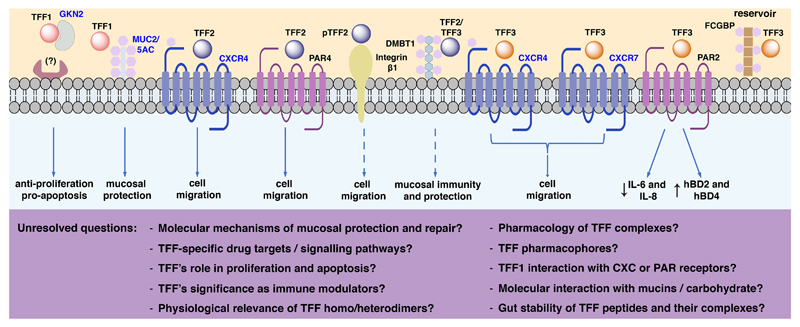Figure 1. Interactions of TFF peptides.
The figure includes validated and hypothetical interactions, potential associated physiological functions, and unresolved questions. Targets highlighted in blue are supported by independent research groups. Dashed arrows and ? denotes functions that have not been experimentally validated. The TFF1-GKN2 heterodimer displays synergistic anti-proliferative and pro-apoptotic effects, yet its mechanism of action remains unknown. TFF1-MUC2/5AC interaction might enhance mucosal protection. TFF2 interaction with CXCR4 or PAR4 accelerates cell migration. TFF2 binds specifically to the GlcNAcα1→4Galβ1→R moiety of MUC6. Interaction of TFF2 and β integrin is supposed to have motogenic effects. TFF2/3 interaction with DMBT1 might play a role in mucosal immunity and protection. TFF3 interaction with PAR2 downregulates the levels of IL-6 and IL-8 and upregulates hBD2 and hBD4. The TFF3-FCGBP complex is considered to act as a reservoir for continuous TFF3 release. CXCR: C-X-C chemokine receptor; DMBT1: deleted in malignant brain tumour 1; FCGBP: IgG Fc binding protein; GKN2, gastrokine 2; PAR: protease-activated receptor; MUC: mucin; hBD human beta defensin.

